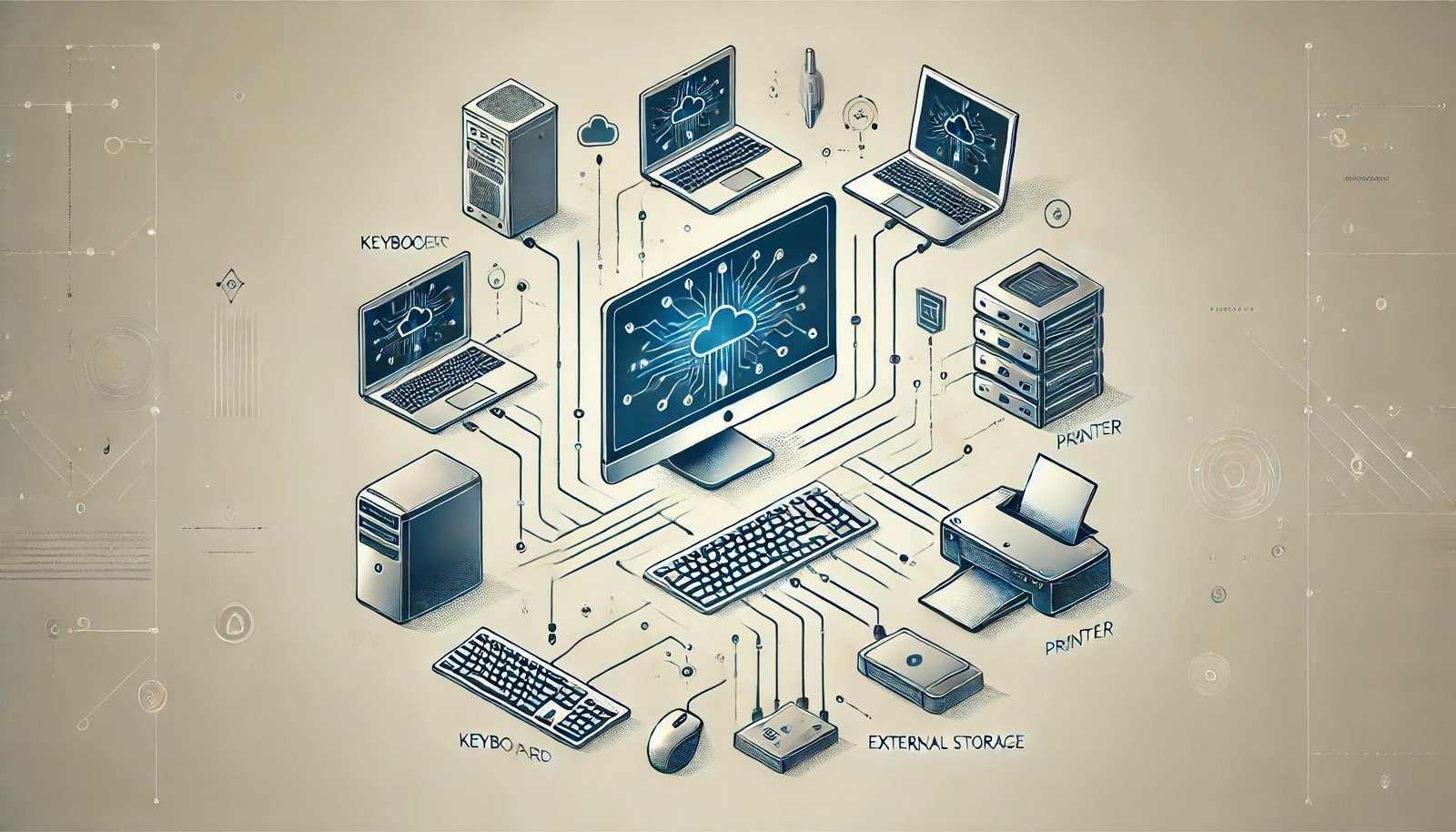Peripheral Interface
 (Representational Image | Source: Dall-E)
(Representational Image | Source: Dall-E)
Quick Navigation:
- Peripheral Interface Definition
- Peripheral Interface Explained Easy
- Peripheral Interface Origin
- Peripheral Interface Etymology
- Peripheral Interface Usage Trends
- Peripheral Interface Usage
- Peripheral Interface Examples in Context
- Peripheral Interface FAQ
- Peripheral Interface Related Words
Peripheral Interface Definition
A Peripheral Interface is a communication link between a computer's central processing unit (CPU) and external devices. It enables the exchange of data between the computer and peripherals such as keyboards, mice, printers, and external storage. Peripheral interfaces can be wired (e.g., USB, HDMI) or wireless (e.g., Bluetooth, Wi-Fi). These interfaces follow specific protocols to ensure compatibility and efficiency, allowing seamless data transmission between internal and external components.
Peripheral Interface Explained Easy
Imagine your computer as a brain. It can think but needs ways to communicate with the outside world. The Peripheral Interface acts like its hands, ears, and mouth—helping it connect to things like a keyboard (so it can receive input), a printer (so it can share information), and a monitor (so it can show you things). Just like how people need roads to travel, a computer needs interfaces to send and receive data.
Peripheral Interface Origin
The concept of Peripheral Interfaces dates back to the early days of computing when external devices like punched card readers and teletypes were used. With the rise of personal computers in the 1980s, interfaces like RS-232, SCSI, and PS/2 became standard. Today, modern interfaces such as USB-C, Thunderbolt, and NVMe enable high-speed and versatile peripheral connections.
Peripheral Interface Etymology
The term "Peripheral" comes from the Greek word "periphereia," meaning "circumference" or "surrounding," while "Interface" derives from Latin and French roots meaning "between" and "to make a face." Together, "Peripheral Interface" describes a system that connects and communicates with devices surrounding a computer.
Peripheral Interface Usage Trends
The demand for Peripheral Interfaces has evolved with technological advancements. Wired interfaces like USB, HDMI, and Ethernet continue to dominate due to their speed and reliability, while wireless interfaces such as Bluetooth and Wi-Fi are growing in popularity due to convenience. With the rise of smart devices, IoT (Internet of Things) connectivity is also expanding, increasing the need for efficient peripheral communication.
Peripheral Interface Usage
- Formal/Technical Tagging:
- Data Transmission
- Computer Architecture
- Input/Output Communication - Typical Collocations:
- "high-speed peripheral interface"
- "wireless peripheral interface"
- "USB peripheral connection"
- "peripheral interface adapter"
Peripheral Interface Examples in Context
- A USB peripheral interface allows a flash drive to connect to a laptop for data transfer.
- A wireless peripheral interface lets a Bluetooth keyboard communicate with a tablet.
- A peripheral interface controller (PIC) helps manage communication between a computer’s motherboard and an external device.
Peripheral Interface FAQ
- What is a Peripheral Interface?
A Peripheral Interface is a system that enables communication between a computer and external devices like keyboards, mice, and printers. - What are examples of Peripheral Interfaces?
Common examples include USB, HDMI, Bluetooth, Ethernet, and PCIe. - What is the difference between a wired and wireless Peripheral Interface?
A wired interface uses physical cables (e.g., USB, HDMI), while a wireless interface relies on radio signals (e.g., Wi-Fi, Bluetooth). - Why are Peripheral Interfaces important?
They allow computers to interact with external hardware, expanding their functionality. - What is the fastest Peripheral Interface?
Interfaces like Thunderbolt 4 and PCIe 5.0 offer some of the highest data transfer speeds. - Can Peripheral Interfaces affect device performance?
Yes, slow interfaces can bottleneck data transfer rates, affecting performance. - Are all Peripheral Interfaces compatible across devices?
No, compatibility depends on device specifications and interface standards. - How do Peripheral Interfaces impact gaming?
High-speed interfaces like DisplayPort and USB gaming peripherals enhance the gaming experience. - What is the future of Peripheral Interfaces?
The trend is moving toward universal, high-speed, wireless connectivity with improved power efficiency. - How do I troubleshoot Peripheral Interface issues?
Check for driver updates, inspect cables/connections, and ensure compatibility between devices.
Peripheral Interface Related Words
- Categories/Topics:
- Computer Hardware
- Data Communication
- Input/Output Devices
Did you know?
The USB (Universal Serial Bus) standard revolutionized peripheral interfaces by replacing older, bulkier connections like serial and parallel ports. First introduced in 1996, USB allowed plug-and-play functionality, eliminating the need for complicated device configurations. Today, USB-C offers even faster speeds and power delivery, making it a universal standard for modern peripherals.
PicDictionary.com is an online dictionary in pictures. If you have questions or suggestions, please reach out to us on WhatsApp or Twitter.Authors | Arjun Vishnu | @ArjunAndVishnu

I am Vishnu. I like AI, Linux, Single Board Computers, and Cloud Computing. I create the web & video content, and I also write for popular websites.
My younger brother, Arjun handles image & video editing. Together, we run a YouTube Channel that's focused on reviewing gadgets and explaining technology.



Comments powered by CComment